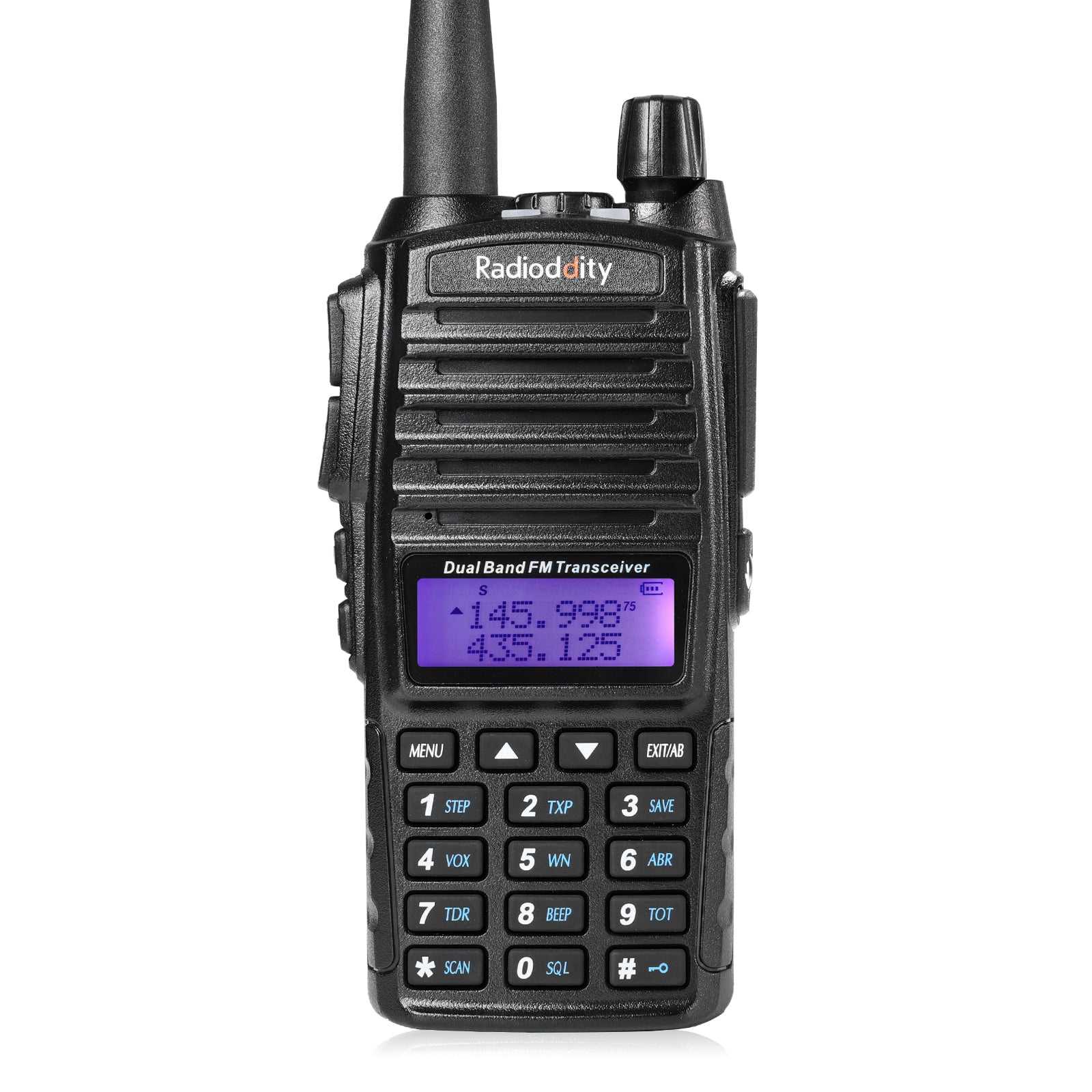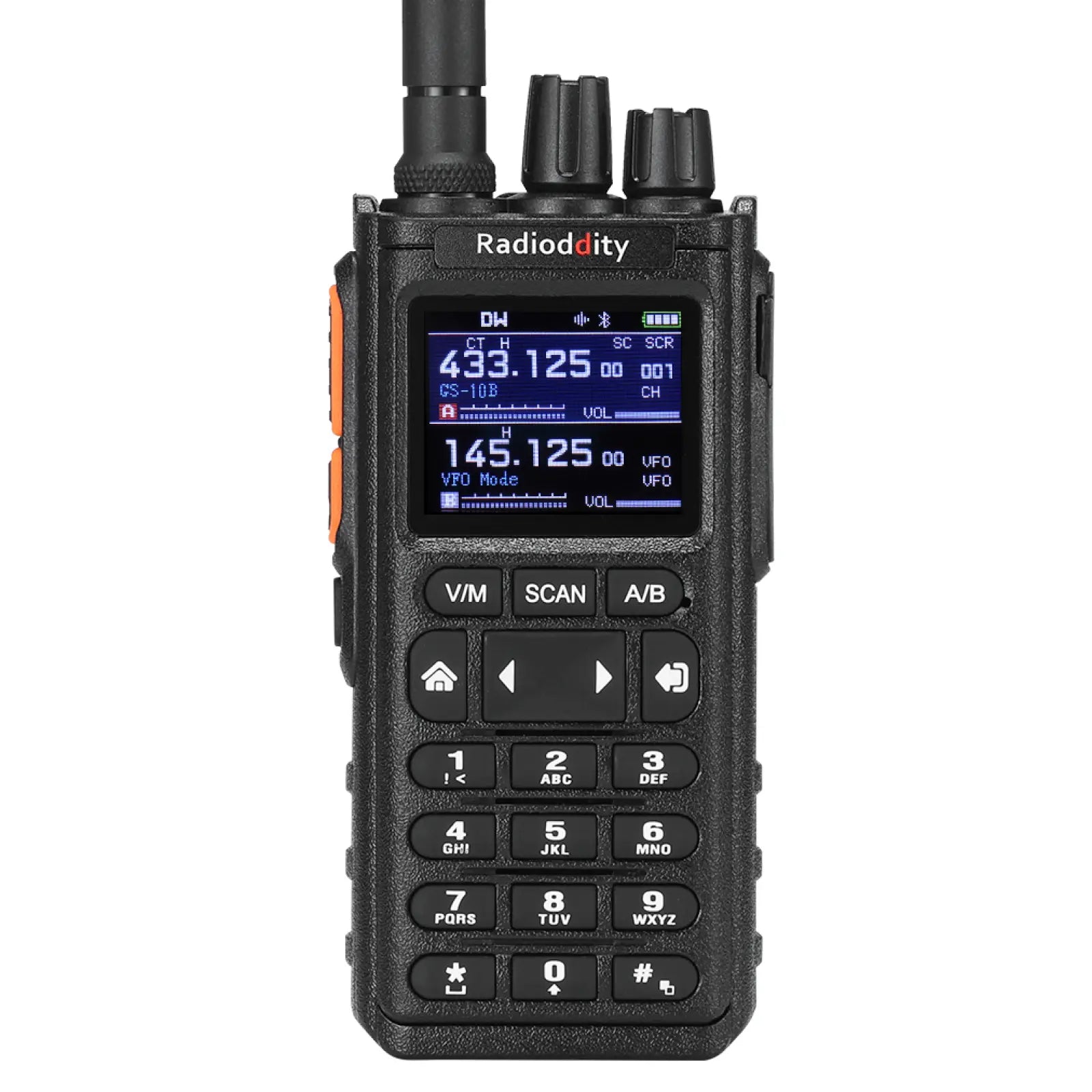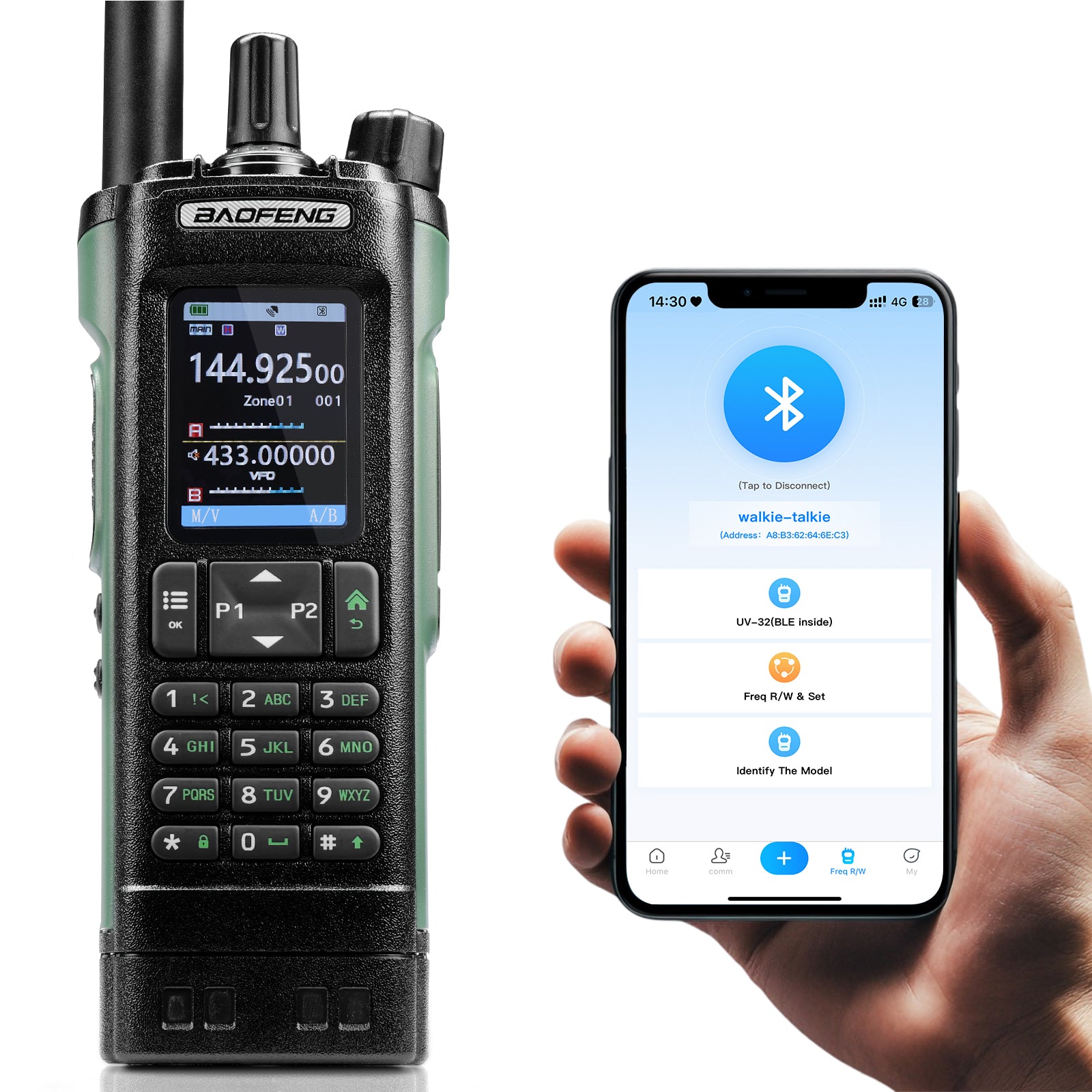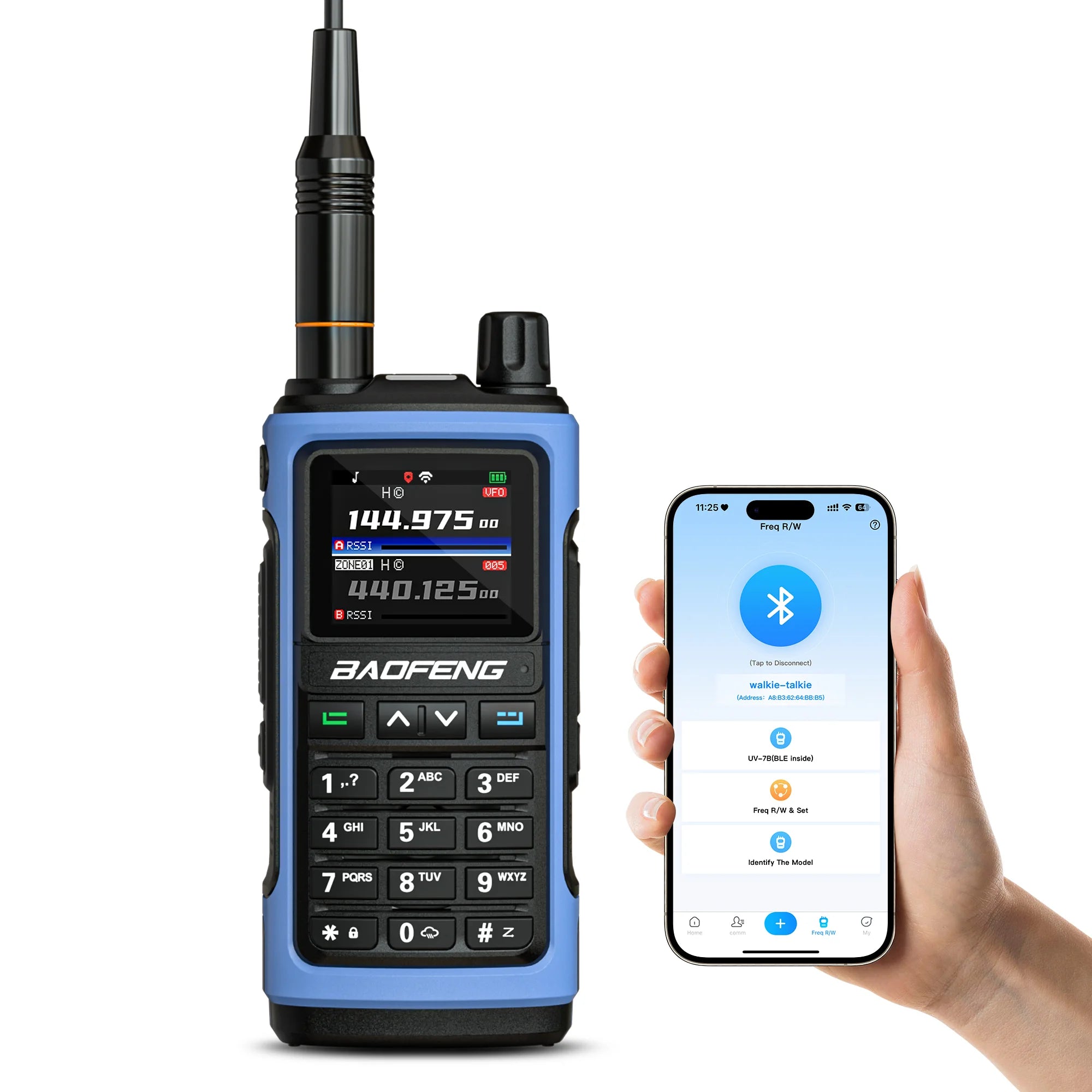
Why Choose Raddy RF760?
Compared with others
① Add adjustable bandwidth in SSB mode
② Add an external wire antenna with a 3.5mm connector to improve the SW reception quality
③ Upgrade the sound quality for a better listening experience
④Include NOAA broadcast and weather hazards alert.
 |
 |
 |
Full-band Radio with SSB
This tiny radio can receive AM, FM, CB, WX, NOAA Weather band plus Alert, Shortwave (2-30 MHz) with Single Side Band and UHF, VHF, and VHF Aviation (Airband). With the help of SSB, RF760 can be efficient in reaching long-range and pick up the worldwide stations when the internet or satellite is not available. |
High Memory Capacity
This radio allows fully automatic or manual search and storage up to 700 stations. It features a tuning knob for tuning stations, making it quick and accurate to select the channels you want. |
2 Ways of Power Source
RF760 uses a standard 1000mAh BL-5C battery, which is safe and easy to find in the market. In addition, you can recharge the radio directly by using the included USB-C cable. |
 |
 |
 |
Additional NOAA Alert
Always be one step ahead of horrible weather. The NOAA function will automatically scan and send alerts to keep you aware of approaching severe weather. Another communication option in times of disaster when cellular towers are always overloaded. |
1+1 Antenna
This SSB shortwave radio comes with a built-in extendable 22'' / 56CM antenna and a supplied external soft antenna with a 3.5mm connector. Pull out the rod antenna when you listen to FM radio, and shorten the pull rod line if there is strong radio interference. The external soft antenna, on the other hand, is designed to enhance the reception of shortwave radio stations. |
Sleep Timer
It can be set to automatically shut down after 10-90 minutes of power on. Also, it can be set to automatically turn on, set to lock or mute. |

Other features:
1. Full band DSP digital demodulation - improve receiving sensitivity, selectivity and anti-IMAGE interference ability.
2. Independent selection between USB ans LSB.
3. Automatic search,manual search, and instant recall by channel.
4. High speed scanning, automatically scan radio station or pre-stored frequency.
5. Shuttle tuning, shuttle stepping setting (support 10Hz), adjustable shuttle stepping digit (for quick selection of frequency).
6. Squelch levels: 10 adjustable squelch levels in SW, VHF, UHF, AIR, CB, SQ band.
7. Multiple values of frequency steps each band.
8. Temperature/Fahrenheit display.
9. Settable noise limit ratio and sensitivity reference.
10. Come with a USB type-C charging port.
Specifications
Frequency Receiving Rang | Sensitivity | Demodulation Mode | Band description
• FM 1: 64.0-108 MHz | 1.5uv | STEREO/MONO | FM Band (30dB noise limit sensitivity)
• FM 2: 76.0-108 MHz | 1.5uv | STEREO/MONO | FM Band (30dB noise limit sensitivity)
• FM 3: 87.5-108 MHz | 1.5uv | STEREO/MONO | FM Band (30dB noise limit sensitivity)
• AM: 520-1710 kHz | 2mV/M | AM | MW Band (20dB noise limit sensitivity)
• SW: 2.00-30.00 MHz | 30uV | AM/SSB/LSB | SW Band Shortwave (26dB noise limit sensitivity; under AM mode)
• CB: 25.00-28.00 MHz | 10dBuV | AM/NFM | City Band Urban Band (12dB noise limit sensitivity)
• AIR: 118.00-138.00 MHz | 3uV | AM | Air Band (12dB noise limit sensitivity)
• VHF UHF: 20.000-520 MHz | -9dBuV | NFM | Wide Range (20dB noise limit sensitivity)
• VHF: 30.00-223.00 MHz | -8dBuV | NFM | Wide Range (20dB noise limit sensitivity)
• VHF: 144.00-148.00 MHz | -8dBuV | NFM | Amateur Radio Band (20dB noise limit sensitivity)
• VHF: 156.025-163.275 MHz | -8dBuV | NFM | International Maritime Channel (20dB noise limit sensitivity)
• UHF: 430.00-520.00 MHz | -8dBuV | NFM | Amateur Radio Band (20dB noise limit sensitivity)
• WX: 162.400-162.550 MHz | -8dBuV | NFM | North American Meteorological Band NOAA WX (20dB noise limit sensitivity) Alert triggered sensitivity -19dBuV
Lithium battery: BL5C 1000mAH 3.7v 3.8WH
Loudspeaker: Ф40MM 8Ω 1W
Headphone output: 3.5MM stereo input
External antenna hole: 3.5MM
Weight: 0.44lb / 0.2kg
Product dimensions: 4.37 x 2.36 x 0.79’’ / 11.1 x 6 x 2CM
Station/Frequency Storage Capacity: 700 in total
FM: 100 channels
AM: 100 channels
SW: 100 channels
AIR: 100 channels
CB: 100 channels
VHF/UHF: 100 channels
UBD (customized): 100 channels
Bandwidth Adjust
• MW/AM (medium wave): 1.80 kHz, 1.00 kHz, 6.00 kHz, 4.00 kHz, 3.00 kHz, 2.50 kHz, 2.00 kHz
• FM (frequency modulation): 40 kHz, 110 kHz, 84 kHz, 60 kHz (should be 40 kHz for monophonicand 60 kHz for stereo in the US).
• SW (short wave): 3 kHz, 2.50 kHz, 2.00 kHz, 1.80 kHz, 1.00 kHz, 6.50 kHz, 4.00 kHz (should be 3.0 kHz for SSB)
• AIR (airband): 3.00 kHz, 2.50 kHz, 2.00 kHz, 1.80 kHz, 1.00 kHz, 6.00 kHz, 4.00 kHz
• CB (urban band): 3.00 kHz, 2.50 kHz, 2.00 kHz, 1.80 kHz, 1.00 kHz, 6.00 kHz, 4.00 kHz (The citizens band (CB) has the 2 modes, AM and FM. In AM, the bandwidth should be set for 8.0 kHz. In FM, the bandwidth should be set for 5 kHz.)
• VHF/UHF: 1.70 kHz, 4.50 kHz, 3.75 kHz, 2.50 kHz (VHF and UHF bands can be used for commercial an amateur radio channels. The commercial radios will almost always be FM, with a bandwidth available of 7.5 kHz for narrowband and 15 kHz for wideband.)
• UBD (customized): 1.70 kHz, 4.50 kHz, 3.75 kHz and 2.50 kHz
• WX (north American weather bands): needs to be set to 15 kHz.
Step Option
• FM: 50.0 kHz, 10.0 kHz, 100.0 kHz
• MW/AM: 10.0 kHz, 5.0 kHz (US) | 9.0 kHz, 3.0 kHz (EU)
• SW: 5.0 kHz, 1.00 kHz, 0.10 kHz, 0.02 kHz, 0.01 kHz
• AIR: 25.0 kHz, 12.5 kHz, 8.3 kHz
• CB: 5.00 kHz, 1.00 kHz, 0.10 kHz, 0.02 kHz, 0.01 kHz
• VHF/UHF/UBD: 25.0 kHz, 12.5 kHz, 7.5 kHz, 5.0 kHz, 1.0 kHz
RF760
RF320
RF75A
RF750
RF30
https://www.radioddity.com/products/raddy-rf760
https://www.radioddity.com/products/raddy-rf320
https://www.radioddity.com/products/raddy-rf75a
https://www.radioddity.com/products/raddy-rf750
https://www.radioddity.com/products/raddy-rf30
Band
Frequency Range
Sensitivity
Stored Stations
Battery
Bluetooth
w/ External Wire Antenna
SOS & Flashlight
APP Control
Earphone Jack
Micro SD Card
Audio Format
FM/AM/SW/CB/VHF/UHF/WB/AIR@@FM: 64-108MHZ
AM: 520-1710kHz
SW: 2-30MHz
CB: 25.00-28.00MHz
VHF & UHF: 20.000-520MHZ
WX: 162.400-162.550 MHz
AIR: 118.00-138.00MHz@@FM: 1.5uv
AM: 2mV/M
SW: 30uV
CB: 10dBuV
VHF: -8dBuV
UHF: -8dBuV
WX:-8dBuV
AIR: 3uV@@700@@Replaceable@@@@✔@@ @@ @@ ✔@@ @@ @@
FM/AM/SW/VHF/WB/AIR@@FM: 64-108MHZ
AM: 520-1710KHZ
SW:3.20-21.95MHZ
VHF: 30.000-199.975MHZ
WB:162.400-162.550MHZ
AIR:118.00-138.00MHZ@@FM≤8dB
VHF≤8dB
AM≤86dB
SW≤40dB
AIR≤8dB@@995@@Replaceable@@✔@@✔@@✔@@✔@@✔@@Support Max 256GB@@MP3, WMA, WAV, APE, FLAC@@
FM/AM/SW/VHF/WB@@FM: 64-108MHZ
AM: 520-1710KHZ
SW:4.750-21.850MHZ
VHF: 30.000-199.975MHZ
WB:162.400-162.550MHZ@@FM≤8dB
VHF≤8dB
AM≤86dB
SW≤40dB@@369@@Fixed@@✔@@✔@@✔@@✔@@✔@@Support Max 256GB@@MP3, WAV, WMA@@
FM/AM/SW/WB@@FM: 87.5-108MHz
AM: 520-1720KHz
SW: 5.7-17.9MHz
WB: 162.400-162.550MHz@@FM≤8dB
MW≤86dB
SW≤32dB@@110@@Replaceable@@✔@@✔@@ @@ @@ @@Support Max 256GB@@MP3, AV, WMA@@
FM/AM/SW@@FM: 87-108MHz
AM: 522-1710KHz
SW: 4.75-21.85MHz@@ @@440@@Replaceable@@✔@@ @@ @@ @@✔@@Support Max 32GB@@MP3, WMA@@
What's in the box?
1 x RF760 radio
1 x In-ear headset
1 x BL-5C lithium battery
1 x USB-C cable
1 x User manual
1 x Wrist trap
1 x Storage bag
![Radioddity GD-168 [OPEN BOX] - Radioddity](http://radioddity.myshopify.com/cdn/shop/files/GD-168_1600x1600_3922a234-2fe4-4b80-8282-3f6d17a10d71.png?v=1762470234)

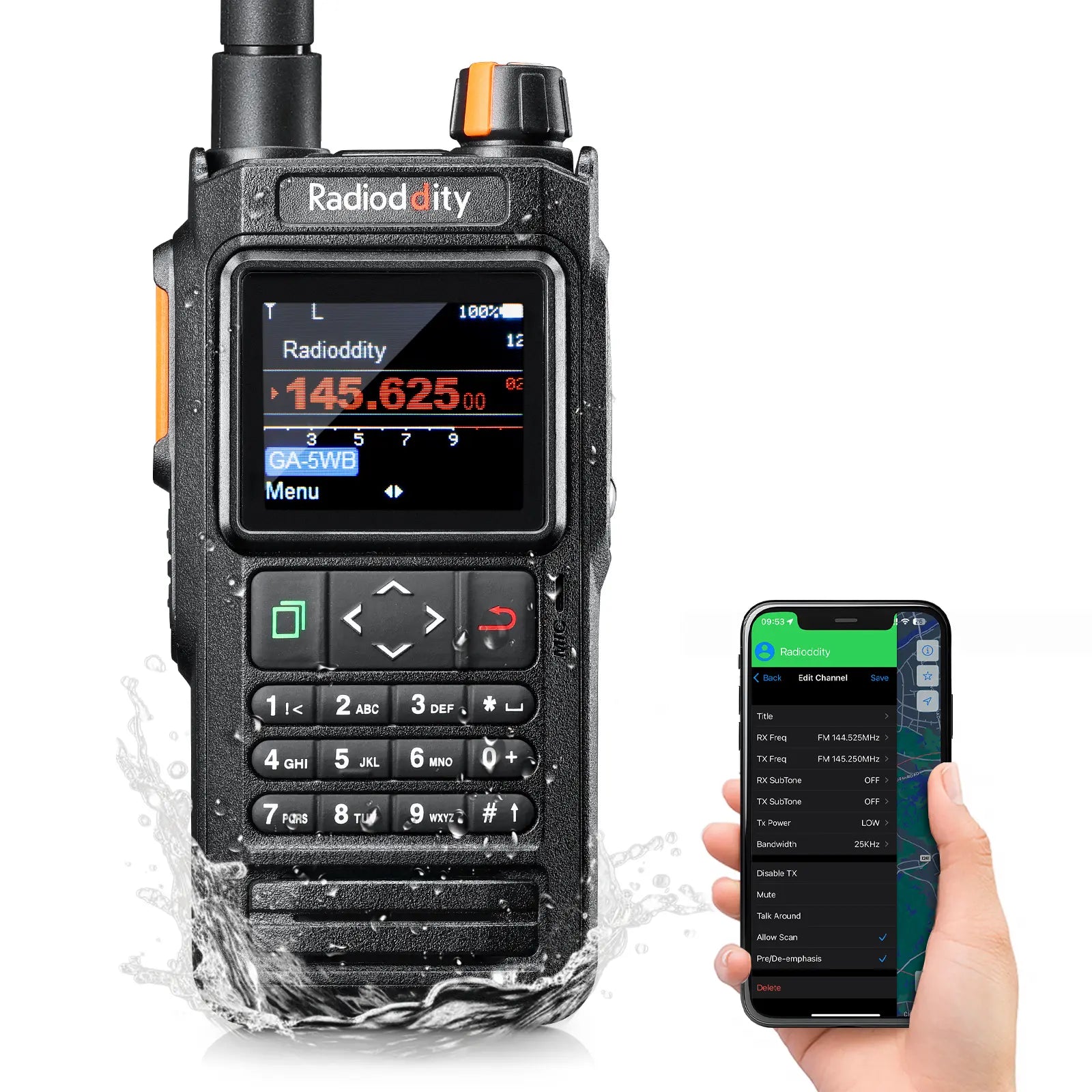








![Baofeng GT-5R 5W Dual Band Radio [Upgraded Legal Version of UV-5R] - Radioddity](http://radioddity.myshopify.com/cdn/shop/products/GT-5RImage.png?v=1762459898)
![Baofeng UV-5R PLUS [5 Colors] | DUAL BAND | 4/1W | 128CH | FLASHLIGHT - Radioddity](http://radioddity.myshopify.com/cdn/shop/products/3_58c037e1-560a-4c85-bd75-67c202269d29.jpg?v=1762457615)










![GA-2S UHF Long Range USB Two way Radio [2/4/6 Packs] - Radioddity](http://radioddity.myshopify.com/cdn/shop/products/5_96d2d28c-8609-4f29-926b-d423141df2f4.jpg?v=1762457835)



![Baofeng BF-888S [2 Pack] | UHF | 5W | 16CH | CTCSS/DCS | Flashlight - Radioddity](http://radioddity.myshopify.com/cdn/shop/products/1___1___1.jpg?v=1762457605)
![Baofeng GT-1 [2 Pack] | UHF | 5W | 16CH | Flashlight | FM Function Two-Way Radio - Radioddity](http://radioddity.myshopify.com/cdn/shop/products/ia_100000006122.jpg?v=1762457668)


